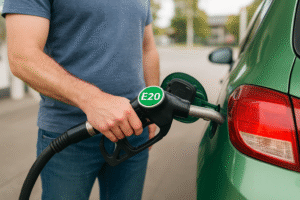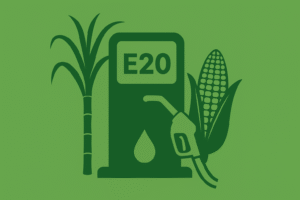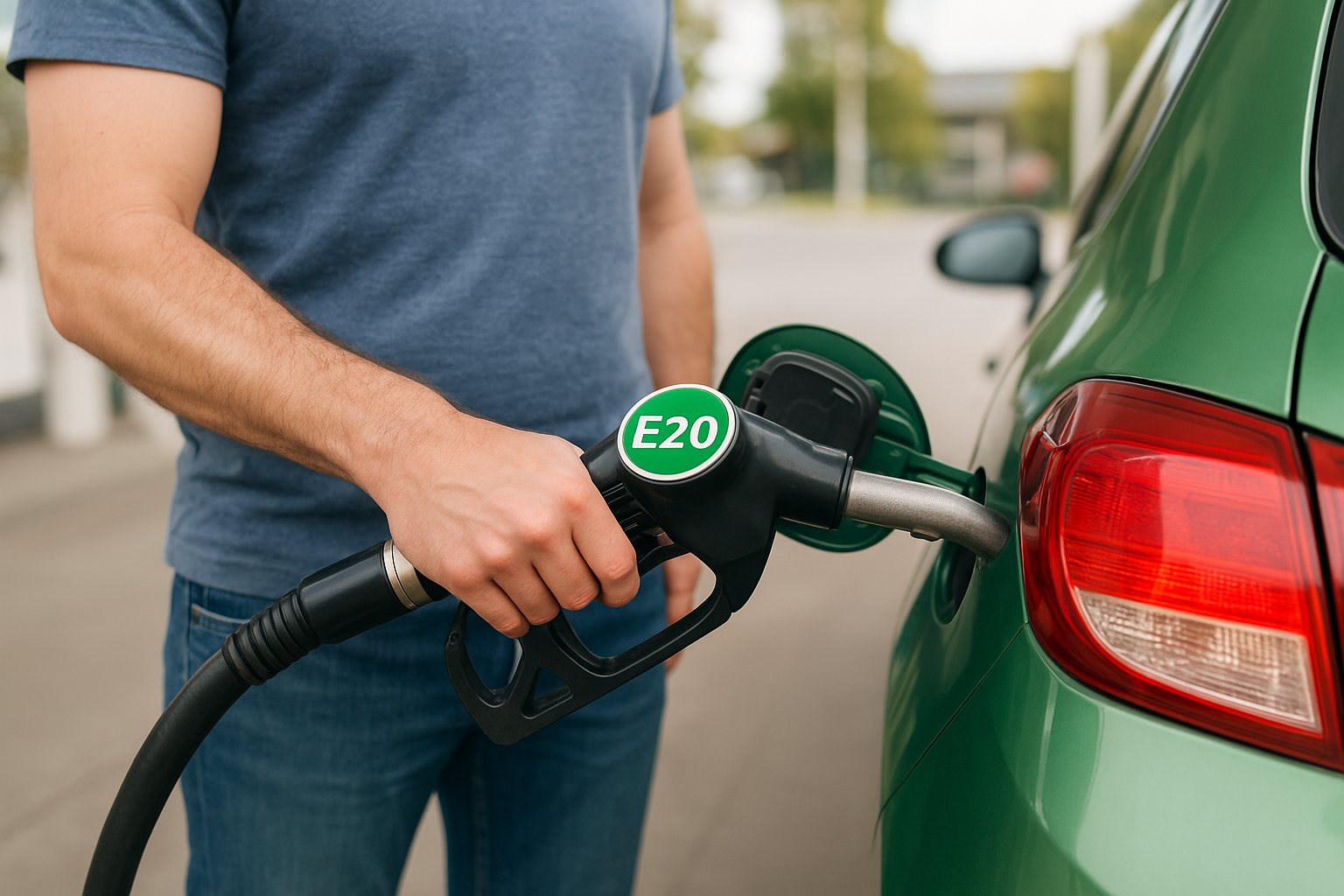Now a days we are seeing a great buzz about the E-20 petrol all over the internet. But the rumours and facts are totally confusing. So we will tell all about it.

What is E20 petrol?
E20 petrol is a type of blended fuel that contains:
20% Ethanol (alcohol-based fuel, usually from sugarcane, corn, or other biomass)
80% Regular Petrol (gasoline)

✅ In simple words:
E20 petrol is petrol blended with 20% ethanol.
It’s cheaper, greener, and reduces oil imports, but gives a little lower mileage and requires vehicles designed or modified to handle it.
E20 petrol (20% ethanol + 80% petrol) is being promoted in many countries, including India, as a cleaner and more sustainable fuel alternative. However, it also comes with some advantages and disadvantages.
Benefits of E20 petrol
Environmental Benefits
- Lower carbon emissions – Ethanol burns cleaner than petrol, reducing CO₂, CO, and other harmful gases.
- Less air pollution – Helps decrease particulate matter and smog-forming pollutants.
- Renewable source – Ethanol is made from crops like sugarcane and maize, reducing dependency on fossil fuels.
Economic Benefits
- Reduces oil import bills – India and other countries can save foreign exchange by blending ethanol with petrol.
- Boosts farmer income – Creates demand for sugarcane, maize, and other ethanol-producing crops.
- Supports rural economy – More ethanol plants mean more local jobs and industry growth.
Energy & Efficiency
- High octane rating – Ethanol has better anti-knock properties, which improves engine performance.
- Improved combustion – Cleaner burning leads to smoother engine operation.
Sustainability & Future Readiness
- Step toward green energy – Helps transition toward biofuels and sustainable energy.
- Government push – Many governments are incentivizing E20 adoption to meet climate targets.
However, while E20 has advantages, it also has some disadvantages.
Disadvantages of Using E20 Petrol
Lower Fuel Efficiency (Mileage Drop)
- Ethanol has lower energy content than petrol.
- Vehicles running on E20 generally give 5–8% lower mileage compared to regular petrol.
Compatibility Issues in Older Vehicles
- Many older two-wheelers and cars were designed for E0–E10 fuel.
- Using E20 can cause engine knocking, rough idling, or even damage if the vehicle is not compatible.
Corrosion and Wear & Tear
- Ethanol is hygroscopic (absorbs water), which may lead to corrosion of fuel tanks, fuel lines, and injectors.
- Rubber and plastic components in the fuel system may wear out faster.
Higher Maintenance Costs
- Because of corrosion and deposits, vehicles may need frequent servicing, replacement of fuel filters, and injector cleaning.
Cold Start Problems
- Ethanol blends can cause harder cold starts, especially in winter or colder regions.
Storage Issues
- Ethanol absorbs moisture, leading to phase separation (water + ethanol layer at the bottom), which can cause engine problems if fuel is stored for long.
Slightly Higher Cost (Short Term)
- While the government promotes ethanol-blended fuel, initial adaptation costs (vehicle modification, infrastructure, storage) may increase overall expenses.
Reduced Engine Power
- Since ethanol has less energy per litre, some vehicles experience a slight drop in acceleration and performance.
In summary: E20 petrol is cleaner for the environment but less efficient for engines not specifically designed for it. Newer vehicles are being made compatible, but older ones may face performance and maintenance issues.

Leave a Reply